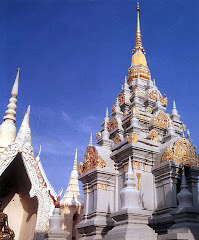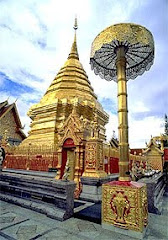King Rama IV
King Rama IV, or Prince Mongkut who had to disrobe himself after his brother’s death, came to the throne in B.E. 2394. He was formally known as Phra Chom Klao. During his reign bhikkhus were greatly encouraged in their study and practice of Buddhism, so that they were well-behaved as well as well-educated in the Buddha’s doctrine. Some rules and regulations for the betterment of the administration of the community of bhikkhus as a whole were laid down; a group of religious good-will mission was sent forth to Ceylon; and the community of Dhammayutta bhikkhus was also established in Cambodia.
Never was the construction work neglected. The Raj-Pra-Dit Temple, one of the most important temples of Bangkok was an evidence of the fact. The greatest and highest “Chedi” or pagoda of Nakhon Pathom, called the “Pathom Chedi” second to none in its design and decorations, also bears witness of his constructive genius and serves to remind the Thai people of its historical importance.
As a result of earnest study in Buddhism there were more books expounding the tenets of the Buddha’s doctrine in Thai language. This movement opened up a new trend of modern thought in disseminating the Dhamma to the people on a broader scale, instead of the former which seemed like monopolizing it for the realization of the few intelligentsia. Of the Pali literature, a volume by the Supreme Patriarch Prince Pavares Variyalongkorn, named “Sugatavidatthividhana” is the most important of the time.
Technorati tags : Ratanakosin Period /Thailand Temple /Buddhism /thai temple /Bangkok





No comments:
Post a Comment